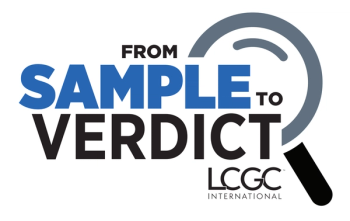
- Special Issues-12-01-2014
- Volume 32
- Issue 12
Comprehensive 2D-LC Analysis of Chinese Herbal Medicines
This application note demonstrates comprehensive 2D-LC analysis of decoctions from four different plants used in Chinese herbal medicine. Good separation of the components of all four plants was achieved using the same method.
Chinese herbal medicine (CHM) is one facet of traditional Chinese medicine (TCM) and uses single plants or preparations of several plants. Their effectiveness depends on the synergistic effects of multiple components of the plants. The plants used in CHM present extremely complex samples. Therefore, comprehensive two-dimensional liquid chromatography (comprehensive 2D-LC) is the method of choice for their analysis (1–4).
Experimental Conditions
Comprehensive 2D-LC analysis was performed with the Agilent 1290 Infinity 2D-LC solution. In the first dimension an Agilent ZORBAX Narrow-Bore RR SB-Aq column (2.1 × 100 mm, 3.5 μm) was used with a gradient of water and methanol, each with 0.1% formic acid, at a flow rate of 0.05 mL/min. The second dimension separation used an Agilent ZORBAX RRHT Bonus-RP column (3.0 × 50 mm, 1.8 μm) with shifted gradients of water and acetonitrile, each with 0.1% formic acid, at a flow rate of 2.5 mL/min. Modulation was realized using the Agilent 2-position/4-port duo valve, equipped with two 60 μL loops. A modulation time of 30 s was used. Detection was performed at 254 nm. Samples of plants used in CHM were prepared as decoctions, in the same manner as they are prepared for pharmaceutical use.
Results
Using a decoction from mori ramulus a comprehensive 2D-LC method for the analysis of plants used in CHM was developed. During method development the use of a SB-Aq column with methanol in the first dimension in combination with different columns (Phenyl-Hexyl, SB-CN and Bonus-RP) with acetonitrile in the second dimension was investigated. Among the tested column combinations the combination of the SB-Aq column and the Bonus-RP column provided maximum coverage of the two-dimensional separation space and the accessible two-dimensional separation space could be further enlarged through the use of shifted gradients in the second dimension.
The comprehensive 2D-LC method developed using a decoction from mori ramulus was applied to the analysis of decoctions from four different plants used in CHM. The resulting separations are shown in Figure 1. The comprehensive 2D-LC method provided good separation of the compounds contained in the decoctions from all four plants.
Conclusions
The comprehensive 2D-LC analysis of decoctions from four different plants used in CHM provides good separation of the components of all four plants and reveals the very complex nature of the analyzed plants. Differences in the elution pattern of the compounds contained in the decoctions from the individual plants can be observed.
References
(1) P.S. Xie and A.Y. Leung, J. Chromatogr. A1216, 1933–1940 (2009).
(2) X.M. Liang et al., J. Chromatogr. A1216, 2033–2044 (2009).
(3) D.Z. Yang et al., J. Chromatogr. Sci.51, 716–725 (2013).
(4) Y.Z. Liang et al., J. Chromatogr. B812, 53–70 (2004).
Agilent Technologies Inc.
5301 Stevens Creek Blvd., Santa Clara, California 95051
tel. (800) 227-9770
Website:
Articles in this issue
about 11 years ago
MicroSolv Technologyabout 11 years ago
Milestone, Inc.about 11 years ago
Pickering Laboratoriesabout 11 years ago
Shimadzu Scientificabout 11 years ago
Restek Corporationabout 11 years ago
Shodex/Showa Denko America, Inc.about 11 years ago
SiliCycle® Inc.about 11 years ago
AccuStandard, Inc.about 11 years ago
CHROMacademyabout 11 years ago
Avantor Performance Materials, Inc.Newsletter
Join the global community of analytical scientists who trust LCGC for insights on the latest techniques, trends, and expert solutions in chromatography.




